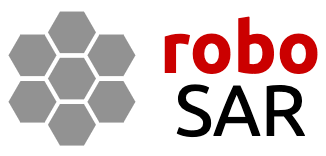Progress Review 11
Fleet size: 5 robots!!
Perception
- Perception subsystem is now integrated with rest of system
- Increased resolution
- Cameras need to be focused and calibrated after every run
- Was having issues running two templates on the Kheperas: turns out we had to update the Khepera libraries
- Tested in real life, able to detect and report agent position
MRSLAM
- Better speed profile for each robot: linear speed increase instead of step function
- Laser Scanner non-blocking read update
- Tuning loop closures
- Ignore out-of-order data sequences from agents
- Erroneous scans from a robot getting added to the map
- Out of order sequences
- Sensor data is suspect
- Sensitivity of loop closures varies with features in the environment
Navigation
- Lazy Traffic Controller repulsion
- Was still having issues of agents colliding into each other during IRL testing (likely due to latencies and localization inaccuracies)
- Added additional repulsion force to original velocity obstacle output velocity commands
- Should help with agent-agent collisions
- Perception Search behaviour
- Turn in place + pause at coverage tasks
Task Generation
- Two problems:
- A single random tree gets heavily pruned as the map changes
- Cannot keep a track of which rooms are visited which rooms aren’t if the tree keeps changing
- Problem breakdown:
- Can the tree transform along with the map?
- Can we grow multiple trees instead of one single tree?
- Can we disable trees instead of pruning them?
- Solution:
- Divide and conquer:
- grow multiple RRTs, one per pose-graph node
- This way the RRTs will be smaller and can be optimized along with pose-graph updates
- Avoid pruning
- Survival of the fittest:
- Generate coverage tasks on the RRTs, maximizing coverage while minimizing # of tasks needed
- Iterate through each RRT and filter out nodes that are within a radius of an already established coverage task
- Intertree filter then filters out overlapping coverage tasks between different trees
- Final coverage tasks are then returned
- Once a coverage task is visited, it is no longer updated and cannot be changed.
- Divide and conquer:
Task Allocation
- Geofence based on estimate of search area
- Task allocation now has two types of tasks, what is their relative importance?
- Coverage Tasks
- Frontier Tasks
- Do two coverage tasks have same importance?
- Do two frontier tasks always have same importance?
- The Naive task allocator treats all the tasks the same only based on distance
FVD Sneak Peek:
- An information theoretic approach to allocating tasks during search and rescue
- What is the information utility of each frontier task? Of each coverage task? How do they compare with each other?
- Can we exploit information utility to speed up search for victims in a search and rescue scenario?
